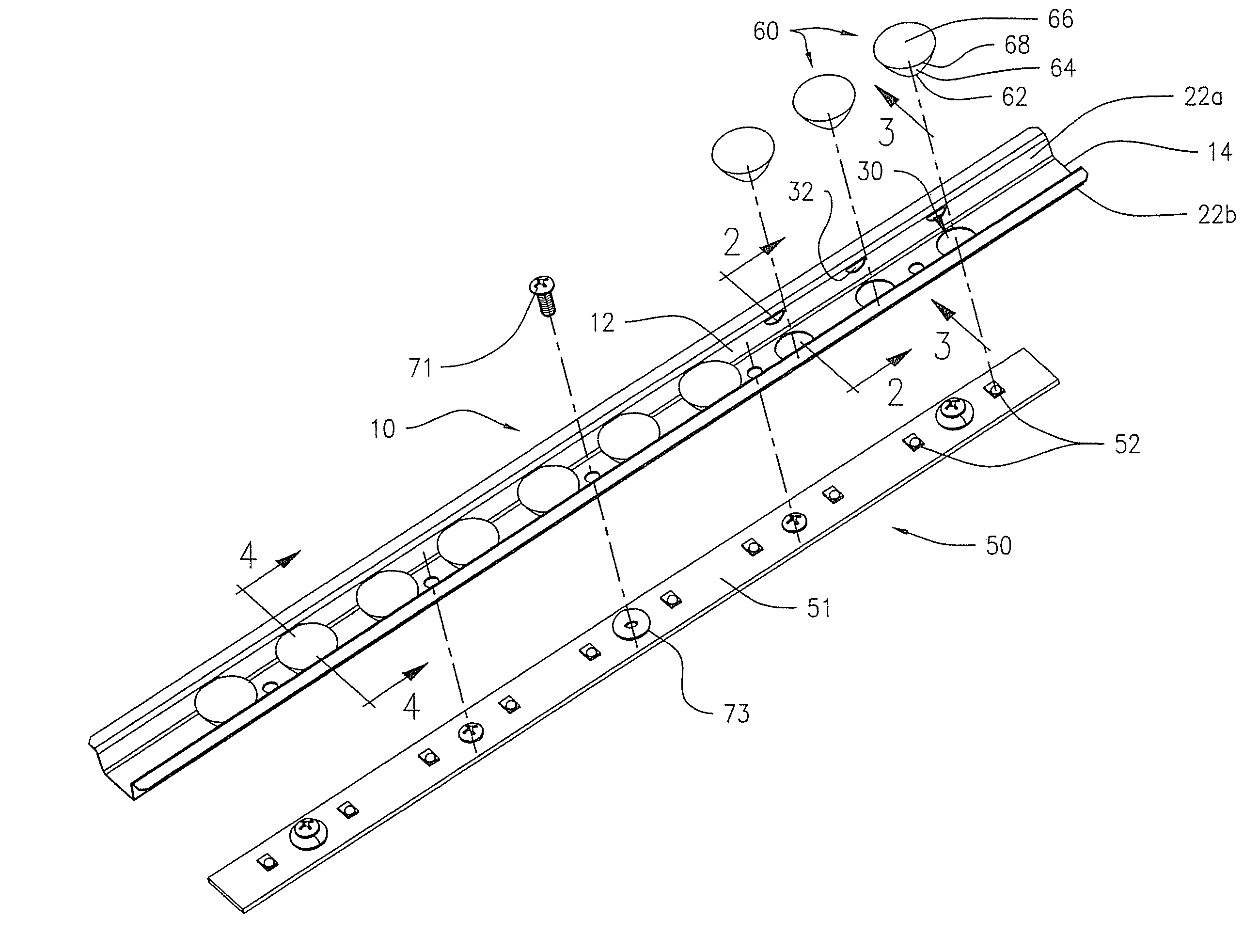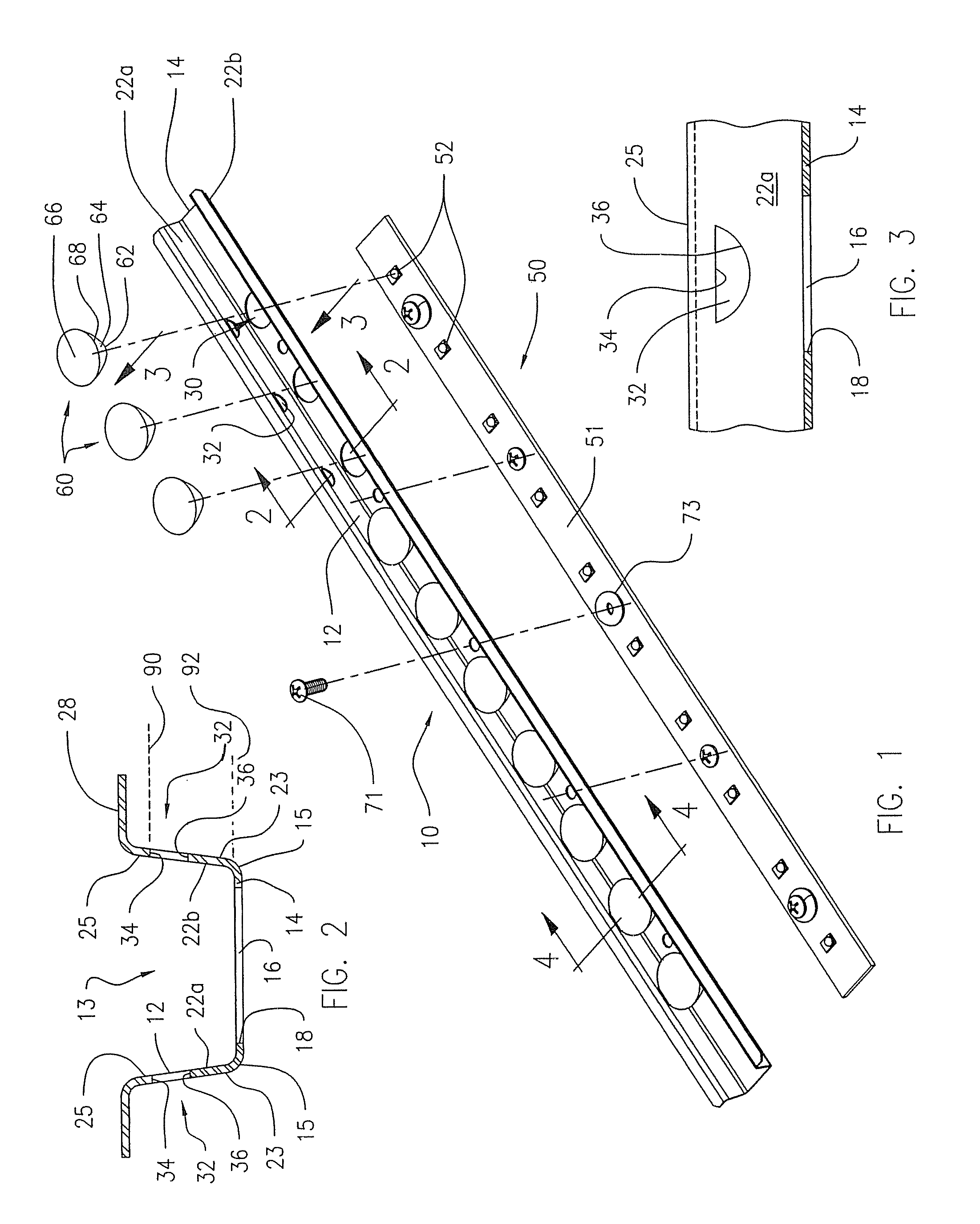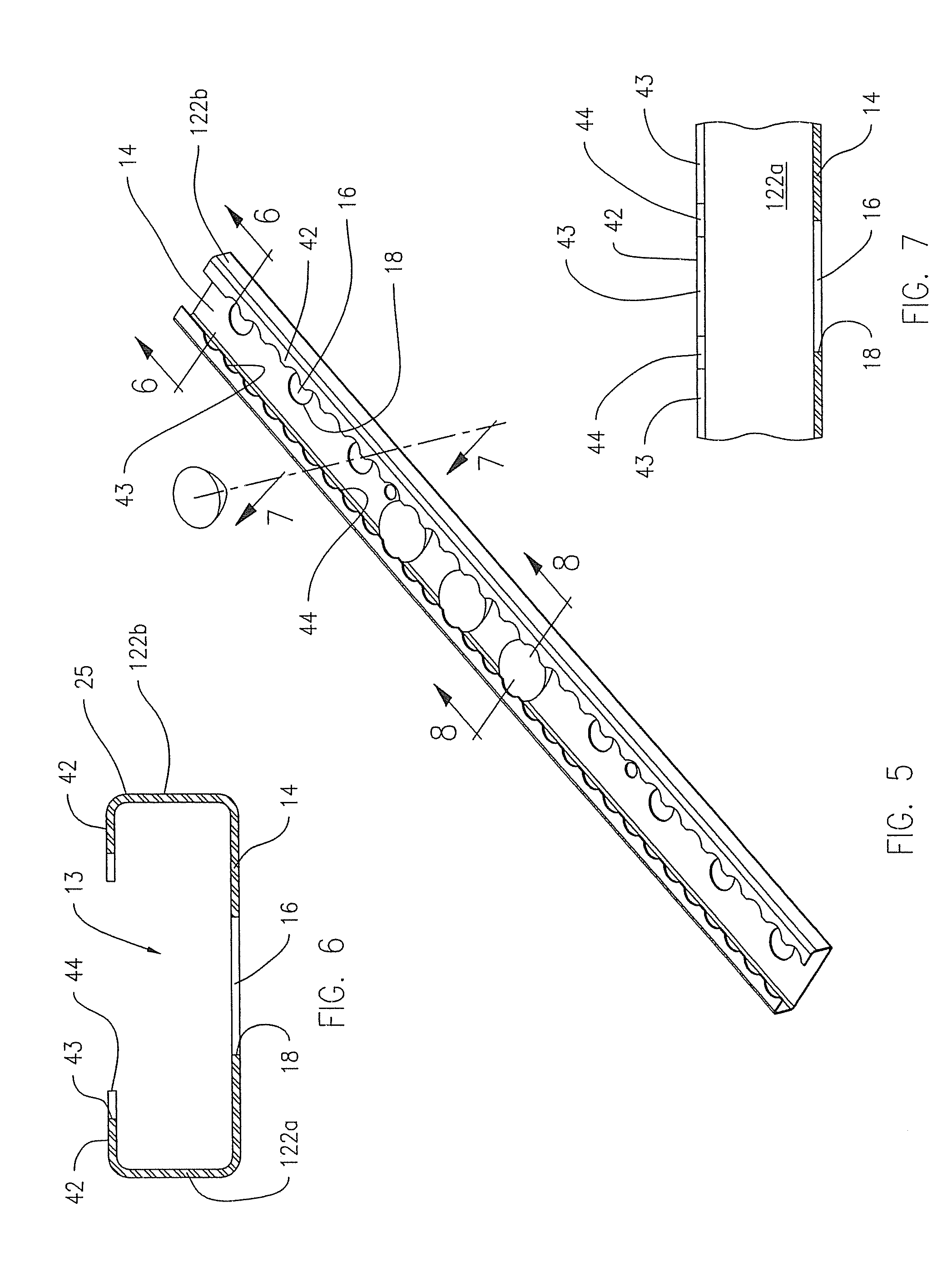Optic positioning device
a positioning device and optical technology, applied in the field of lighting apparatuses, can solve problems such as breaking the legs or other elements involved in mounting, and achieve the effect of insertion and removal of optics
- Summary
- Abstract
- Description
- Claims
- Application Information
AI Technical Summary
Benefits of technology
Problems solved by technology
Method used
Image
Examples
first embodiment
[0027]FIGS. 1-4 show the optic holding and positioning device 10, having an elongated channel member 12 that includes an elongated planar base 14, opposed first and second side edges 15, and opposed first sidewall 22a and second sidewall 22b, each sidewall having a proximal edge 23 extending from the respective first and second side edges 15 of the base 14, and a distal edge 25. The sidewalls 22a, 22b are tilted slightly outwardly. The sidewalls may, but need not, be formed integrally with the base as a unit, such as by folding a planar member (e.g. sheet metal). The base 14 and sidewalls 22a, 22b may be formed by other methods as will be evident to those of ordinary skill in the art. The device 10 also includes at least one optic holding position. Each optic holding position includes the aperture 16 formed in and through the base 14, and opposed slot openings 32 formed, one each, in the respective opposed sidewalls 22a, 22b, adjacent transversely to the aperture 16 formed in the ba...
second embodiment
[0030]FIGS. 5-8 show the optic holding and positioning device 10, wherein the sidewalls 122a, 122b have an inwardly-extending upper flange 42 that extends from the distal edge 25 of the first and second sidewalls 122a, 122b over the rim 68 of the optic 60 and at least a portion of the light-exiting face 66 of the optic 60. The distal edge of the inwardly-extending upper flange 42 is shown having a plurality of inwardly (convexly) curved portions 43 toward the distal edge 25, separated by a plurality of outwardly extending portions 44. The inwardly (convexly) curved portions 43 conform to the curved shape of the optic rim 68, to limit the area of the light-exiting face 66 that is covered by the flange 42. The sidewalls 122a, 122b in this embodiment do not require the slot openings 32 of the embodiment of FIGS. 1-4 to restrain the optic 60 in the longitudinal +Y direction. The sidewalls 122a, 122b can be spaced apart a distance greater than the diameter of the optic rim, while retaini...
PUM
 Login to View More
Login to View More Abstract
Description
Claims
Application Information
 Login to View More
Login to View More - R&D
- Intellectual Property
- Life Sciences
- Materials
- Tech Scout
- Unparalleled Data Quality
- Higher Quality Content
- 60% Fewer Hallucinations
Browse by: Latest US Patents, China's latest patents, Technical Efficacy Thesaurus, Application Domain, Technology Topic, Popular Technical Reports.
© 2025 PatSnap. All rights reserved.Legal|Privacy policy|Modern Slavery Act Transparency Statement|Sitemap|About US| Contact US: help@patsnap.com



